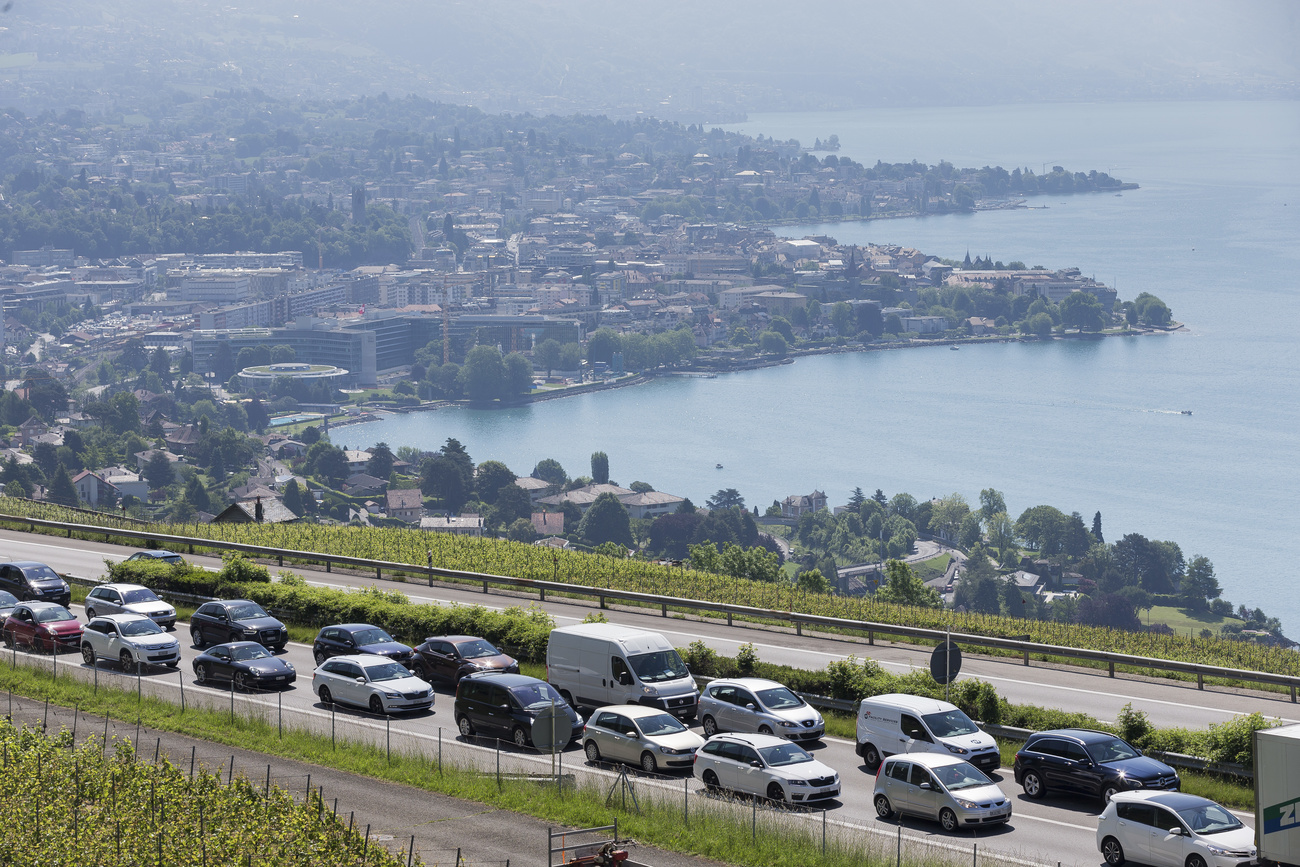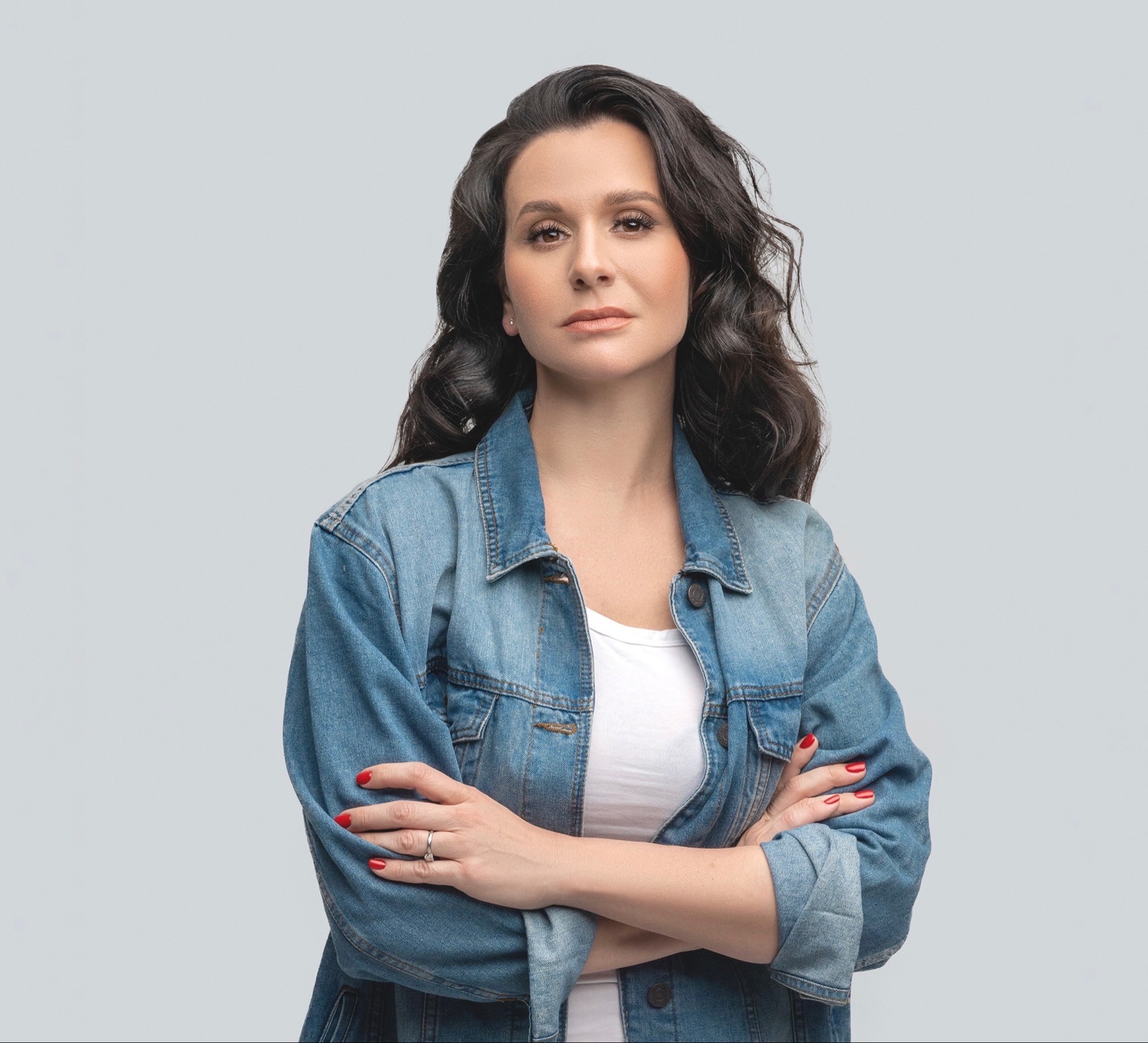
Switzerland Today
Dear Swiss Abroad,
How much thought do you give to what you eat and where it comes from? How easy is it to buy sustainable food where you live? Today is UN Sustainable Gastronomy DayExternal link and in this briefing we look at how the Swiss diet and agriculture will have to change – specifically by eating less meat – for the country to reach its climate goals by 2050.

In the news: Nemo feted, UBS sued, measles spread, and diplomatic ties severed.
Five weeks after winning the Eurovision Song Contest, Nemo celebrated in Biel/Bienne yesterday evening. The Swiss singer’s hometown had organised the celebration on the packed Burgplatz. “Every morning I walked past this square to school,” Nemo said, visibly moved. “And now you are all here because of me. It’s like an absurd dream.”
Sanctioned Russian-Uzbek multi-billionaire Alisher Usmanov has filed a lawsuit against UBS, claiming damages for “breach of contract and tortious misconduct”. The reason given by the lawyers for the lawsuit is that the Swiss bank’s German subsidiary, UBS Europe, “unlawfully” reported Usmanov to the Financial Intelligence Unit. UBS declined to comment.
Measles is on the rise in Switzerland with 87 cases of the infectious disease registered so far this year, compared to just 23 cases throughout last year and zero occurrences in 2022 and 2021. The government doesn’t expect a major epidemic because the high vaccination rate for young children (94%) should prevent this.
After Mexico’s government severed diplomatic ties with Ecuador, Switzerland agreed to represent Mexico’s diplomatic interests in Ecuador. Mexican Foreign Minister Alicia Bárcena and her Swiss counterpart, Ignazio Cassis, signed an agreement to this effect.

Meat dominates the Swiss diet and agriculture, but that will have to change for the country to reach its climate goals by 2050. Trends like increased chicken consumption worry experts – but there’s a way out.
Switzerland’s climate strategy clearly states that meat consumption is “still too high”, my colleague Sara Ibrahim notes in this article. The amount of meat consumed in Switzerland (more than 50kg per person per year) is less than that consumed in France, Spain and Germany but still around twice the global average.
The problem, say experts, is that the government’s strategy lacks specific measures to convince people to eat less meat and consume more plant-based products. Also, it’s very difficult for people to change their eating habits without strong incentives.
Reducing greenhouse gas emissions would also require reducing the number of farm animals, but this is not explicitly mentioned in the government’s strategy, points out one agronomist, who adds that meat production and consumption in Switzerland have been growing since the 1960s. Although people are eating slightly less beef and pork, chicken consumption is growing steadily.
Part of the challenge is that almost two-thirds of the agricultural area in Switzerland consists of permanent meadows that can’t be used for crops – using them as pastures for cattle and sheep is the only way to make them profitable, with the result that “we have too many animals and we produce too intensively”, according to one expert.
One proposed solution is using most of Switzerland’s arable land to produce crops for human consumption and feeding cows grass (not imported feed). Under such a model, cows would produce less milk and less beef, as they would not be overfed with concentrated feed (containing mainly soy proteins and cereals) meant to fatten them up. This, it is estimated, would result in humans eating two-thirds less meat while having more sustainable production and a more varied diet.

Food wars: first it was Albanian fans taunting their Italian rivalsExternal link by snapping uncooked spaghetti in front of them. Then the Austrians followed suit, breaking baguettes in the faces of French fans before their Euro 2024 clash.
Fans flocking to Germany for the month-long tournament are entertaining themselves with good-natured “food wars”External link looking every bit as spicy as the games themselves. As well as the desecration of national foods in the streets – which has sparked more laughter than outrage – food banners are springing up in stadiums.
“Fondue better than goulash” read one at the game between Switzerland and Hungary. “Eat Pasta, Run Fasta”, said an Italian poster at the Albanian game. And “Kielbasa (sausage) better than gouda”, boasted Polish fans against the Netherlands.
Host nation Germany is counting its blessings that widely feared hooligan trouble has been minimal, with more snapped pasta and bread than broken bones and bottles. “Thank God there hasn’t been any violence. Instead we’re seeing a lot of fun and banter between fans like these hilarious food wars,” said food stall-holder Roland Koch in Hamburg.
“Just don’t mess with our currywurst or there’ll be trouble!” he warned, referring to the ubiquitous sausage and spicy sauce on sale at his kiosk and seemingly every other street corner in Germany.

Now that’s not something you see every day: a herd of ibex grazing halfway up a dam wall. The precarious picnic took place on the Salanfe dam in southwest Switzerland.
“Ibex need mineral salts that they can’t find in their food, especially in winter. So they look for this salt just about everywhere,” Fabienne Marclay, who has been looking after the Salanfe hostel for 29 years, told Swiss public television, RTSExternal link, yesterday. “And as we have a magnificent dam oozing with saltpetre [the mineral form of potassium nitrate], which contains these mineral salts, they lick it to restore their health for the summer.”
It’s a fascinating balancing act for bipeds. “It’s a great discovery. I didn’t think it was actually possible. I think it’s magical. It’s incredible to see them like that in the wild, free to roam,” raved a hiker from Neuchâtel.
Ibex owe their ability to balance to the shape of their legs. “They have two separate toes, with no membrane between them, and under their heel, they have a membrane that acts like a sucker,” Marclay explained.
“It’s quite impressive,” said a photographer. “As a human being, when you walk at the foot or the top of the dam, it’s really steep. And here, these ibex are real tightrope walkers, with no fear of heights and making it seem really easy.”

In compliance with the JTI standards
More: SWI swissinfo.ch certified by the Journalism Trust Initiative








